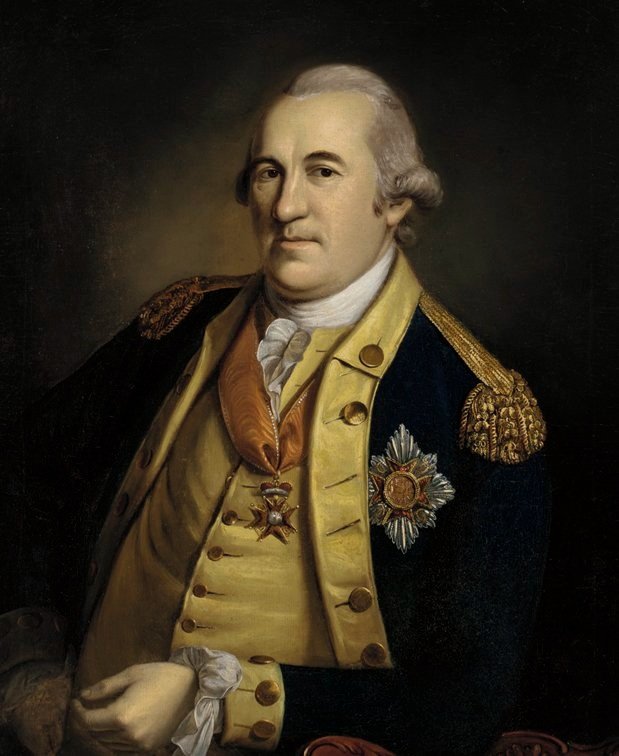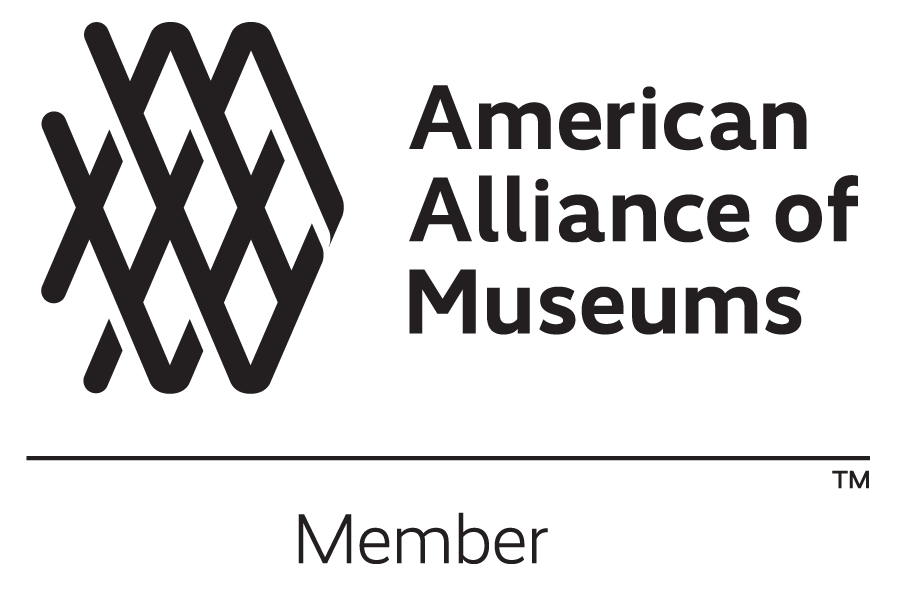Object of the Month: Baron von Steuben’s Liquor Chest and Battlefield Drinking Culture
By Jack Campbell
In this installment of Object of the Month, Programs & Events Associate Jack Campbell highlights one of the most unique items in the Museum’s collection, a liquor chest owned by Baron von Steuben, and explores battlefield drinking culture during the Revolutionary War.
Charles Willson PealE, Baron Frederick William von Steuben, 1780, Pennsylvania Academy of the Fine Arts
The Baron von Steuben was one of the most important and influential figures of the American Revolution. His training program for soldiers and its standardization were groundbreaking for the Continental Army that lacked the order and discipline required for a standard army, and his time implementing his famed drills at Valley Forge was an important point in the American war effort.[1] But von Steuben, like other officers and soldiers, did not spend all his time training and drilling. There was downtime in an encampment, and soldiers had different methods of entertaining themselves. Among the most popular was drinking to pass the time between battles throughout the war.
Drinking, in general, was not uncommon during this period. While we now know how alcohol sterilizes and cleans, this was not necessarily known at this time. Colonists believed alcohol was a healthier choice over water, which was often unfiltered and carried diseases and bacteria.[2] The reason the water was so filthy was because of general hygiene habits of the period. While clean water might have been more readily available in the countryside, city-dwellers often dumped waste of all kinds into their water supplies. So, while something like a well of clean water and a fresh water stream might be available in the country, this was not the case in cities.[3]
Among the most common drinks of the time were wine, beer, and cider. Whiskey also grew in popularity after the war, and George Washington even had a distillery at Mount Vernon.[4] Washington also was a great fan of wine, especially madeira, as was Thomas Jefferson.[5] John Adams was a great fan of cider, having a cup of it every morning, and writing of its perceived health benefits.[6] No matter the drink, alcohol consumption was a standard part of life for many I the Colonial Era. Taverns became meeting places, where everything from politics to gossip were discussed and organized over a glass.
Some of the most amusing stories of soldiers’ drinking escapades come from the memoir of Joseph Plumb Martin. Martin was a Continental soldier throughout the Revolution and detailed his experiences. There was a fair share that involved alcohol. One particular one was a story of when soldiers took their ration of alcohol and drank it immediately before a march. As part of their rations, each man got a gill, or a little more than a shot, of alcohol, usually rum or maybe whiskey. They were supposed to mix it with water to avoid sickness and to prevent drunkenness, but soldiers often downed the drink on its own. Because soldiers often ate very little, with rations being few and far between and marching many miles at a time, the alcohol would hit their systems almost immediately and make them drunk. Martin’s story details how the entire unit proceeded to struggle on their march and could barely even cross over a fence that should have been an incredibly simple process had they been sober.[7]
While stories such as that can be humorous, they were also a sign of a larger problem. Drunk soldiers cannot form an effective army, and measures had to be taken to try and stem this problem in the American and British armies.[8] Charges such as drunk and disorderly conduct were commonly brought against soldiers. These matters, like most others, were dealt with harshly.[9]
lIQUOR cHEST, cOLLECTION OF fRAUNCES tAVERN mUSEUM
This liquor chest belonged to the Baron von Steuben during the war, and one can see by its size how important having a ready supply of liquor was. The 20-piece chest of glassware contains gold detailing and is composed of potash-lime-silica, similar to late 18th-century glass produced in Maryland. Other earlier examples were made in Bohemia as well, making it difficult to determine whether this chest was made in America or Europe. The glassware in the chest was all hand-blown and includes decanters, pourers, and drinkware. It is unknown where the glass was made as von Steuben’s European background, and American experience provide two distinct possibilities. Makers made similar glass in both the colonies like Maryland and in places in Europe like Bohemia. Experts have extensively analyzed the glassware, confirming what was suspected about its composition. According to our records, the liquor chest was a gift of von Steuben to a general who passed it to the Fuller family that ultimately donated it to Fraunces Tavern Museum in the early 20th century.
Officers would have had luggage traveling with them and something like this would have been one of its more valuable pieces. During the day, von Steuben would have been drilling men and doing his job. When he was off duty, he was likely to have gone to this chest and had a glass of its contents. He very well would have had more than one glass, for that matter.
Overall, drinking was a common part of everyday life in the army encampments of both the American and British armies. It was so prevalent that rules had to be implemented to curb the problems it caused. An item such as this liquor chest symbolizes how this drinking culture extended well beyond common soldiers and included even the highest-ranking officers. It could provide quite humorous stories, but also its fair share of problems. It was representative of the larger culture and can inform our modern perception of the period.
Bibliography
Campbell, Jack. “John Adams’s Love of Cider.” Journal of the American Revolution. November 24, 202. Retrieved from https://allthingsliberty.com/2021/11/john-adamss-love-of-cider/.
Crews, Ed. “Rattle-Skull, Stonewall, Bogus, Blackstrap, Bombo, Mimbo, Whistle Belly, Syllabub, Sling, Toddy, and Flip: Drinking in Colonial America.” Colonial Williamsburg Journal (Holiday, 2007).
Gordon-Reed, Annette and Peter S. Onuf. “Most Blessed of the Patriarchs” Thomas Jefferson and the Empire of Imagination. (Liveright Publishing Corporation, 2016).
Martin, Joseph Plumb. Private Yankee Doodle: Being a Narrative of Some of the Adventures, Dangers and Sufferings of a Revolutionary Solider. Edited by George E. Scheer. (Eastern Acorn Press, 1993).
Murrow, Pamela. “How They Loved Their Spirits.” Journal of the American Revolution, February 27, 2013. Retrieved from https://allthingsliberty.com/2013/02/how-they-loved-their-spirits/.
National Park Service. “General von Steuben.” Valley Forge National Historic Park. Retrieved from https://www.nps.gov/vafo/learn/historyculture/vonsteuben.htm).
Sheehan, Michael J. F. “Courts-Martial of the Corps of Light Infantry, 1779.” Journal of the American Revolution, October 28, 2019. Retrieved from https://allthingsliberty.com/2019/10/courts-martial-of-the-corps-of-light-infantry-1779/.
Shepherd, Joshua. “Drunk and Disorderly: The Dreadful Havoc of Spirituous Liquors.” Journal of the American Revolution, October 27, 2016. Retrieved from https://allthingsliberty.com/2016/10/drunk-disorderly-dreadful-havoc-spirituous-liquors/.
Swindell, Meliss. “What was in colonial cups besides tea? Cider, water, milk, and whiskey!” National Museum of American History. Retrieved from https://americanhistory.si.edu/blog/2012/12/what-was-in-colonial-cups-besides-tea-cider-water-milk-and-whiskey.html.
Footnotes
[1]National Park Service, “General von Steuben.”
[2]Crews, “Rattle-Skull, Stonewall, Bogus.”
[3]Swindell, “What was in Colonial Cups?”
[4]Murrow, “How They Loved Their Spirits.”
[5]Gordon-Reed and Onuf, 195.
[6]Campbell, “John Adams’s Love of Cider.”
[7]Martin, 79.
[8]Shepherd, “Drunk and Disorderly: The Dreadful Havoc of Spirituous Liquors.”
[9]Sheehan, “Courts-Martial of the Corps of Light Infantry, 1779.”






